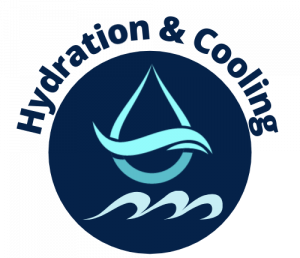Keep your team’s water buffalo system clean and sanitized with our comprehensive maintenance guide for football programs. Learn proper techniques to ensure player safety and equipment longevity.
_______________________________
Sports Water Buffalo Maintenance: Ensuring Safe Hydration for Football Athletes
Proper hydration is critical for football players, especially during intense practices and games in hot weather. Your team’s water buffalo system is the frontline defense against dehydration—but only if it’s properly maintained. Neglected hydration systems can harbor bacteria, affect water taste, and potentially compromise player health. This guide covers everything coaches and equipment managers need to know about keeping water buffalo systems clean, sanitized, and functioning optimally throughout the season.
Why Proper Maintenance Matters
A well-maintained sports water buffalo doesn’t just deliver water—it delivers peace of mind. During high-intensity football practices, players might consume 1-2 gallons of water each. With multiple athletes using the same system, proper sanitation isn’t just good practice—it’s essential for team health.
Bacteria and mold can grow quickly in warm, moist environments, especially in systems that sit unused between practices. Regular maintenance prevents biofilm development, eliminates strange tastes and odors, and extends the life of your expensive equipment. Most importantly, it protects your athletes from potential illness when they need hydration most.
Weekly Cleaning Protocol
Implementing a consistent weekly cleaning schedule keeps your football team’s water buffalo in top condition. Here’s how to do it right:
Step 1: Empty and Rinse
After each use, completely drain any remaining water. Thoroughly rinse the interior with clean, warm water to remove any sediment or debris. Pay special attention to corners and crevices where residue might collect.
Step 2: Scrub Thoroughly
Using a non-abrasive brush with a long handle, scrub all interior surfaces with a mixture of mild dish soap and warm water. Focus particularly on the bottom edges and any fixtures where biofilm might develop. For drinking hoses and nozzles, use a specialized cleaning brush to reach inside these narrow channels.
Step 3: Sanitize Properly
After cleaning, sanitization is crucial. Create a solution using 1 tablespoon of unscented household bleach per gallon of water. Fill the tank completely, ensuring the solution contacts all surfaces. Allow it to sit for 15-30 minutes. Alternatively, use NSF-approved sanitizing tablets specifically designed for hydration systems.
Step 4: Rinse Completely
Thoroughly rinse the entire system with clean water multiple times until all sanitizer smell is gone. This typically requires at least 3-4 complete rinses. Don’t forget to run clean water through all hoses, nozzles, and dispensing components.
Monthly Deep Cleaning
Beyond weekly maintenance, schedule a monthly deep cleaning to address components that need extra attention:
Disassemble and inspect all removable parts including pressure valves, coiled drinking hoses, and dispensing nozzles. Soak these components in sanitizing solution, scrub with appropriate brushes, and check for wear or damage. Replace any components showing signs of cracking, excessive wear, or mineral buildup.
Examine pneumatic tires on mobile units for proper inflation and tread wear. Verify the powder-coated frame remains intact without rust spots that could compromise structural integrity. Check that all moving parts operate smoothly, applying food-grade lubricant to appropriate components as needed.
Seasonal Storage Preparation
When football season ends, proper storage preparation prevents damage and ensures your water buffalo is ready for next season:
Perform a final thorough cleaning and sanitization. After the system is completely dry, protect the tank from dust and contamination by covering openings with clean cloth secured with rubber bands. Store the unit in a climate-controlled environment when possible to prevent extreme temperature exposure that can damage components.
For units with rechargeable capabilities, follow manufacturer guidelines for battery maintenance during extended storage. Remove batteries when possible or maintain appropriate charge levels to prevent battery degradation.
Troubleshooting Common Issues
Even with regular maintenance, you might encounter some challenges with your football team’s water buffalo:
If players report strange tastes or odors, perform an immediate deep cleaning with particular attention to hoses and nozzles where bacteria often hide. For persistent issues, consider replacing hoses and using activated carbon filters to improve taste.
When water pressure seems insufficient, check for kinked hoses, partially blocked nozzles, or pressure valve issues. Clean or replace affected components as needed. For systems with pumps, verify proper function and clean any intake filters that might be restricting flow.
Ready To Upgrade Your Team’s Hydration System?
Proper maintenance extends equipment life, but eventually, all systems need upgrading. If you’re spending excessive time on repairs or struggling with an outdated system, it might be time for a new solution.
At Hydration & Cooling, we specialize in cutting-edge hydration solutions designed specifically for football programs. Our team water tankers feature FDA and NSF-approved tanks, antimicrobial components, and designs that serve 8-20 players simultaneously. In addition to our advanced water tankers, we provide a range of customizable options to meet the unique needs of each team. Our commitment to quality ensures that every product is designed with performance and safety in mind, allowing coaches and trainers to focus on what matters most—keeping their athletes hydrated. With our innovative sports hydration solutions for athletes, teams can boost performance and enhance recovery on and off the field.
Contact our team today for a personalized consultation. We’ll help you select the perfect hydration system that meets your team’s specific needs while simplifying maintenance requirements.
Keep Your Team Safely Hydrated
Don’t compromise on player safety or performance. Explore our range of football-specific hydration solutions or schedule a maintenance consultation with our experts. Our hydration solutions are designed to enhance player endurance while minimizing the risk of injuries. It’s essential to consider individual needs, especially for athletes with preexisting medical conditions in football, as tailored hydration strategies can significantly impact their performance and well-being. Ensure your team is supported by the best practices in hydration to maintain optimal health throughout the season.
Call us at (555) 123-4567 or visit hydrationandcooling.com today!
When Life Gets Hot • We Do Cool!
